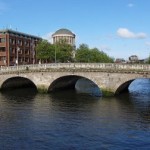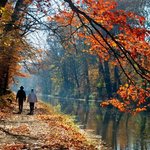Rupert Parker takes an historic toure across Turkey as he goes walking the Lycian Way.
In front of me are small bowls of eggs, olives, tomato salad, bread and home-made goat’s cheese. I’m in the mountains in South West Turkey, at almost 2000m, and a shepherd is sharing her breakfast with me. This is one of the many joys of walking the Lycian Way in Turkey, a 330 mile long distance route on Roman roads, old footpaths and mule trails. It starts in Fethiye and ends in Antalya, running between the mountains and the sea, and it takes over a month to walk.
Lycia is the historical name of the Tekke Peninsula. A long way from Istanbul, it’s the bit of Southern Turkey which juts out into the Mediterranean, and the people who settled here, around 2000 BC, were known as Lycians. Little is known of them but they were conquered first by the Persians, then Alexander the Great, before the region became a province of Rome in 43 AD.
Everyone left their mark here – Lycian rock tombs scatter the landscape, there’s a submerged city and the Romans built amphitheatres, baths, temples and triumphal arches. As you walk this route, you really feel you’re stepping back into the past.
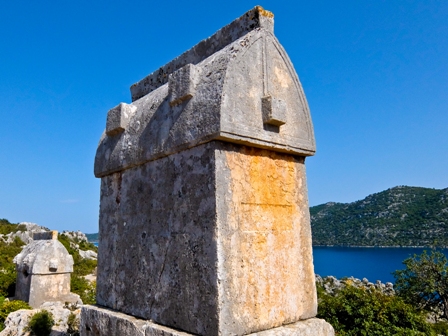
I’ve only got a week so I’m going to sample some of the greatest hits. My first hike starts in the seaside village of Adrasan, a couple of hours by car from Antalya, and it’s raining as I set out. The sign says that this leg of the Lycian way is 17 km and it’s a steep climb up through pine trees on a well-marked path. I realise that this is hiking for grown-ups, not for softies, but the gradient gradually levels out as I reach the highest point at 700m.
Peeking through the clouds is the top of Mount Olympos, at 2365m, the region’s highest peak, not to be confused with its Greek counterpart. It’s still raining sporadically and I take shelter with a kindly shepherd who pours me a warming cup of tea. From here it’s downhill to the ruins of the ancient Lycian city of Olympos on the coast and once a major port. These days nature has taken over but it’s still possible to make out the city wall, a bath complex and a large theatre. Nobody knows when the city was founded but a tomb inscription has been dated to around 300 BC.
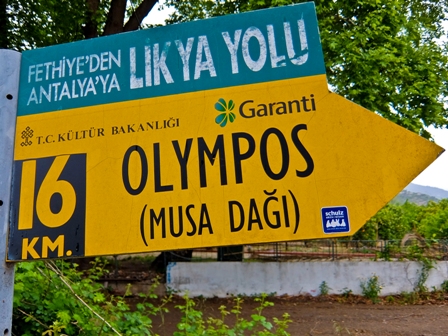
North of here, is Chimaera, named after the fire-breathing monster slain by Bellerophon in Homer’s Iliad and I can see why. Flames spew out from fissures in the rocks, lighting up the side of the mountain. These eternal fires are a result of spontaneous combustion of methane gas from deep inside the earth. Most people visit at night, when the display is spectacular, but it’s still pretty good during the day.
Another place worth a visit is the ruins of Arycanda, one of the oldest Lycian cities, perhaps dating back to 2000 BC, and one of the most dramatic sites in Turkey. At 1000m, it straddles the side of a mountain in five terraces and there are spectacular views into the valley below and across to the sea. There’s a two storey bath complex, an agora where the remains of shops can still be seen, and a well preserved theatre with twenty rows of seats.
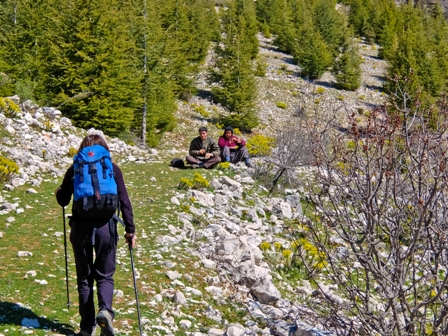
I’m keen to see some of the coast so my next walk starts at Andriake, about three miles south west of Demre. In Lycian times this was also was an important port and small fishing boats still use it. The ruins are spread over a wide area and there’s a new museum incorporating part of a huge granary built by the Roman emperor, Hadrian.
It’s a beautiful day so I’m keen to press on before it gets too hot and the trail follows the coast, dipping down to pristine beaches, then climbing up to small headlands. Now the sun’s come out, it’s easy to see why they call it the “Turquoise Coast”, the deep blue sea looking very inviting. Unfortunately, I’ve no time to linger as I have a pressing rendezvous with a boat that’s going to take me to the island of Kekova and the sunken city of Simena.
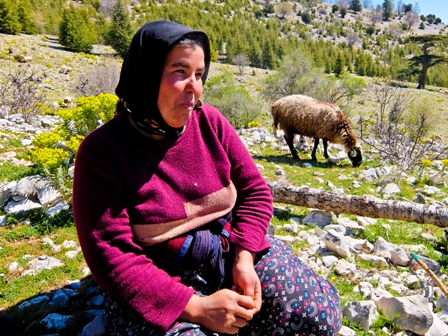
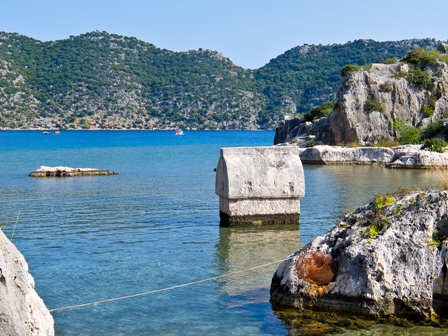
In the second century AD, there was a terrible earthquake here, water levels changed and Simena slipped into the sea. As we approach the island I can see ruined houses standing next to the shore and steps descending mysteriously into the depths. The waters are so clear here that it’s easy to make out the foundations of buildings and the outline of the original harbour. To protect it, they’ve banned snorkelling and swimming so the only way to see it is from a boat.
Across the bay, on the mainland, is the remaining part of Simena, now a small fishing village called Kaleköy. Towering above it is a crusader castle, built on the Lycian acropolis, so I leave the boat and climb up to investigate. Inside is a tiny Roman theatre, carved into solid rock and a few blocks of an ancient temple. Nearby are a number of Lycian tombs overlooking the sea and there’s even one sticking out of the water – what you might call a watery grave.
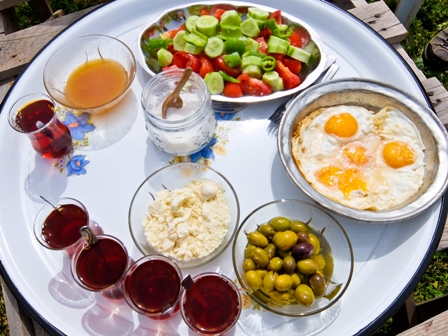
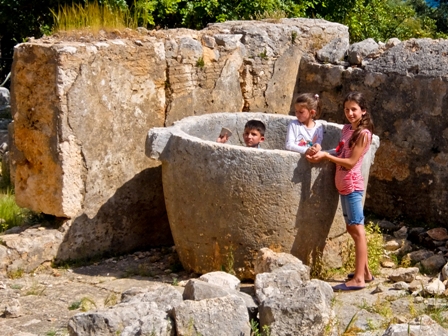
It’s easy to underestimate how hard some stretches of the Lycian Way can be. Perhaps the most challenging section is between Demre and Finike where you climb from sea level up to almost 2000m and then back down again. It takes at least a couple of days and there’s nowhere to stay. You have to sleep out in the open if you don’t carry a tent, and you definitely need to bring food. That’s why traditional Turkish hospitality is so welcome here – the shepherds have no pie to share, but their cheese, bread and salads are delicious.
All images (c) Rupert Parker
Tell me more about walking the Lycian Way
Walking the Lycian Way has information about the trek, and sells an English guidebook written by Kate Clow who devised the route.
Go Turkey has information about the country.
Inntravel has ten nights self-guided from Antalya to Simena, starting at £1050.
On Foot Holidays has a shorter walk of six nights, also self-guided, from Antalya starting at £630.
Turkish Airlines flies to Antalya from London via Istanbul.



